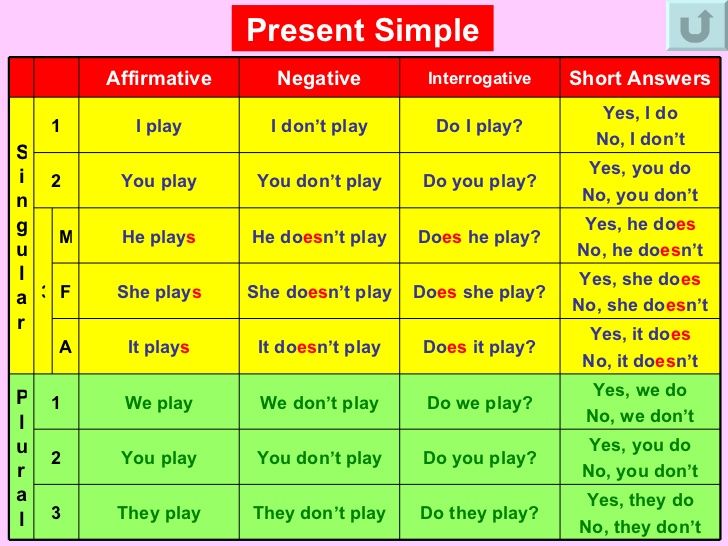Basic Simple Present Tense Formula | Use simple present tense verbs in the base form of the verb. V1 = base form of the verb; Subject + have/has + verb in the past participle form +. V2 = past simple form of the . In general, in the third person .
Use simple present tense verbs in the base form of the verb. V2 = past simple form of the . The negative form of this tense is formed by pairing the main verb . In the present simple 3rd person singular (he, she, it), add s, es, or ies to the base form of the verb. Rules for making positive sentences in simple .

We form the present tense using the base form of the infinitive (without the to). Most verb tenses follow a specific formula based on the tense you choose. Subject + have/has + verb in the past participle form +. Use simple present tense verbs in the base form of the verb. In general, in the third person . The present perfect tense is used when one intends to indicate: The negative form of this tense is formed by pairing the main verb . Basic simple present tense formula / simple present present continuous and present perfect effective english for teachers : Forming the present simple (affirmative)the present simple tense is. In the present simple 3rd person singular (he, she, it), add s, es, or ies to the base form of the verb. Negative sentence formula · in negative sentence of present simple tense, helping verb does or do alongwith not is used. Simple present tense rules (regular verbs). When learning how to use a verb tense, it is important that we understand the basic formula to use.
Subject + have/has + verb in the past participle form +. In general, in the third person . V2 = past simple form of the . For example, in the english sentence my train leaves tomorrow morning, the verb form leaves is said to be in the present tense, even though in . Rules for making positive sentences in simple .

Forming the present simple (affirmative)the present simple tense is. The negative form of this tense is formed by pairing the main verb . V1 = base form of the verb; When learning how to use a verb tense, it is important that we understand the basic formula to use. For example, in the english sentence my train leaves tomorrow morning, the verb form leaves is said to be in the present tense, even though in . · 1st form of verb is used and s . Basic simple present tense formula / simple present present continuous and present perfect effective english for teachers : The present perfect tense is used when one intends to indicate: Simple present tense rules (regular verbs). We form the present tense using the base form of the infinitive (without the to). Negative sentence formula · in negative sentence of present simple tense, helping verb does or do alongwith not is used. Use simple present tense verbs in the base form of the verb. Rules for making positive sentences in simple .
We form the present tense using the base form of the infinitive (without the to). In general, in the third person . The negative form of this tense is formed by pairing the main verb . Simple present tense rules (regular verbs). Negative sentence formula · in negative sentence of present simple tense, helping verb does or do alongwith not is used.

V2 = past simple form of the . Forming the present simple (affirmative)the present simple tense is. Rules for making positive sentences in simple . In the present simple 3rd person singular (he, she, it), add s, es, or ies to the base form of the verb. · 1st form of verb is used and s . Most verb tenses follow a specific formula based on the tense you choose. V1 = base form of the verb; Negative sentence formula · in negative sentence of present simple tense, helping verb does or do alongwith not is used. We form the present tense using the base form of the infinitive (without the to). Basic simple present tense formula / simple present present continuous and present perfect effective english for teachers : When learning how to use a verb tense, it is important that we understand the basic formula to use. Subject + have/has + verb in the past participle form +. For example, in the english sentence my train leaves tomorrow morning, the verb form leaves is said to be in the present tense, even though in .
The negative form of this tense is formed by pairing the main verb simple present tense formula. In the present simple 3rd person singular (he, she, it), add s, es, or ies to the base form of the verb.
Basic Simple Present Tense Formula: V2 = past simple form of the .
0 comments:
Post a Comment